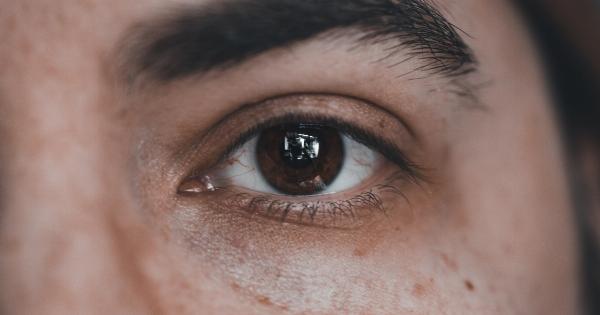The brain is a complex organ that controls various bodily functions, including our eyesight. Any injury to the brain can have a significant impact on our vision and overall visual abilities.
In this article, we will explore how brain injuries can affect eyesight and the various symptoms and conditions that may arise as a result.
Anatomy of the Brain and Vision
Before delving into the impact of brain injuries on eyesight, it is essential to understand the relationship between the brain and vision. The visual pathway begins at the eyes, where light enters and is captured by the retina.
The information gathered by the retina is then transmitted to the brain via the optic nerves, which carry visual signals to the visual cortex located at the back of the brain.
Types of Brain Injuries
Brain injuries can result from various factors, such as trauma, stroke, tumors, or infections. These injuries can be classified into two main types: traumatic brain injuries (TBIs) and acquired brain injuries (ABIs).
Traumatic Brain Injuries (TBIs)
TBIs occur due to external forces that impact the head, leading to damage to the brain. This can result from accidents, falls, sports injuries, or physical assaults. Common examples of TBIs include concussions, contusions, and penetrating injuries.
Acquired Brain Injuries (ABIs)
ABIs, on the other hand, are not caused by external forces but rather by internal factors.
These injuries can occur as a result of various conditions such as strokes, tumors, infections, anoxic brain injuries, or degenerative diseases like Alzheimer’s or Parkinson’s.
Effects of Brain Injuries on Eyesight
Brain injuries can have a wide range of effects on eyesight, depending on the specific area of the brain impacted. Here are some common ways in which brain injuries can affect vision:.
1. Visual Field Loss
One of the most common consequences of brain injuries is the loss of a portion of the visual field. This condition is known as hemianopia or quadrantanopia, depending on the extent of the visual field loss.
Individuals with visual field loss may have difficulty seeing objects or people on one side of their visual field.
2. Blurred or Double Vision
Brain injuries can also lead to problems with visual clarity. This may result in blurred vision or the perception of double vision (diplopia).
Double vision occurs when the eyes are no longer properly aligned, making it difficult for the brain to merge the images from each eye into a single, clear image.
3. Reduced Visual Acuity
Visual acuity refers to the sharpness and clarity of vision. Brain injuries can cause a decrease in visual acuity, making it challenging to see fine details or read small text.
This decrease in visual acuity can significantly impact a person’s ability to perform everyday tasks that require clear vision.
4. Photophobia
Photophobia, or sensitivity to light, is another common symptom of brain injuries. Individuals with photophobia may experience discomfort or pain when exposed to bright lights.
This sensitivity can make it challenging to be in well-lit environments and may require the use of tinted glasses or visors to alleviate symptoms.
5. Eye Movement Disorders
The brain plays a vital role in coordinating the movements of the eyes. Brain injuries can disrupt this coordination, leading to various eye movement disorders.
Some common eye movement disorders include nystagmus (involuntary eye movements), strabismus (misalignment of the eyes), or gaze palsies (inability to move the eyes in a specific direction).
6. Visual Processing Difficulties
The visual cortex, located at the back of the brain, is responsible for processing visual information. Brain injuries can impair this visual processing ability, causing difficulties in interpreting and making sense of visual stimuli.
This can make it challenging to recognize faces, read maps, or navigate visually complex environments.
7. Color Vision Deficits
Brain injuries may also impact color vision, causing color vision deficits. This can manifest as difficulty distinguishing between certain colors or a complete loss of color vision (achromatopsia).
Color vision deficits can make it challenging to perform tasks that rely on accurate color perception, such as choosing clothing or identifying warning signs.
8. Visual Integration Issues
Vision is not solely dependent on the eyes but also on the brain’s ability to integrate visual information with other sensory inputs.
Brain injuries can disrupt this integration process, leading to difficulties in coordinating vision with other senses like balance or proprioception. This can result in problems with depth perception, spatial awareness, or hand-eye coordination.
9. Visual Hallucinations
In some cases, brain injuries can cause visual hallucinations, where individuals see objects, people, or patterns that are not present in reality.
These hallucinations can be unsettling and may affect a person’s daily functioning and quality of life.
10. Visual Agnosia
Visual agnosia is a condition characterized by the inability to recognize or make sense of visual information, despite having intact vision.
This condition can occur as a result of brain injuries and can manifest as difficulty recognizing objects, faces, or even one’s reflection in the mirror.
Conclusion
Brain injuries can have a profound impact on eyesight, causing a range of visual impairments and affecting overall visual abilities.
It is important for individuals who have experienced a brain injury to seek professional medical evaluation and treatment to address any visual problems. Vision therapy, assistive devices, and rehabilitation programs can help individuals regain visual function and improve their quality of life following a brain injury.


























